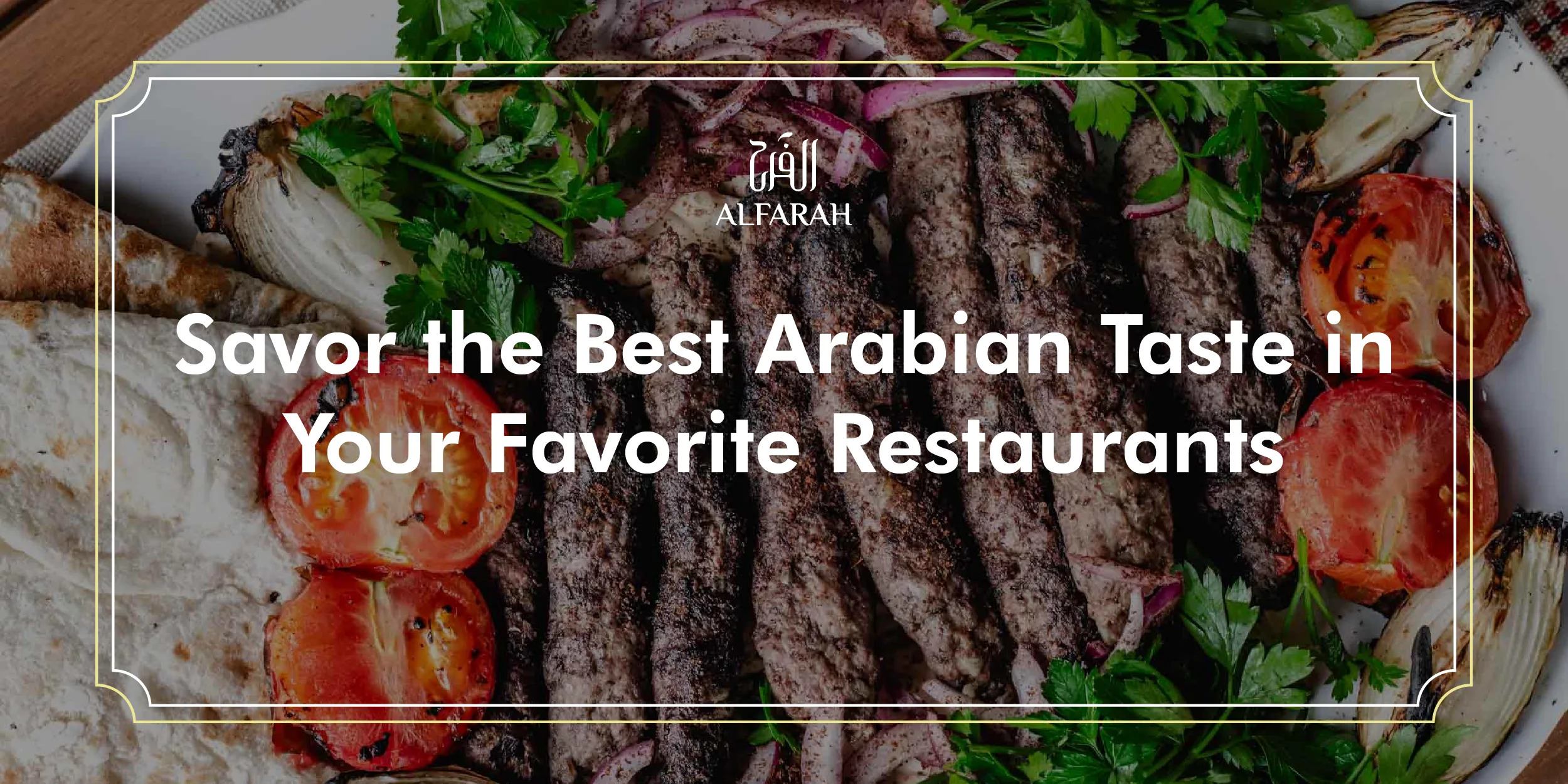Introduction to Arabian Taste
Arabian tastes are a tapestry of flavors, colors, and fragrances that combine centuries of tradition with fine culinary expertise. A cuisine born in the Middle East and represents an impressive history of trade routes, tribal traditions, and, notably, an intense love for spices and fresh ingredients. Each dish is a story, penned by geography and climate, and by a culture of the utmost respect for hospitality.
Arabian food is very diversified with regional differences or variations cut across the realms of Saudi Arabia, Lebanon, Syria, and the UAE. The flavor is achieved through the balance of spices such as cumin, cinnamon, cardamom, and turmeric in a way that their dishes turn out to be highly demanding yet within reach for a wide range of palates.
Key Ingredients in Arabian Taste
Arabian taste relies on unique spices, grains, and meat mixture that gives each dish a specific aroma and flavor.
Spices and Herbs Essential to the Arabian Flavor
Among the characteristic features of Arabian cooking, spices appear as a key element. Cumin, coriander, sumac, and saffron are relatively common, but many dishes feature blends like Baharat. This spice mix adds depth to everything from stews to grilled meats. Cardamom is utilized in savory dishes and sweets alike; cinnamon and nutmeg add warmth to more traditional sweets.
Typical Ingredients Used in Traditional Dishes
Beyond spice, fresh ingredients in Arabian Taste include tomatoes, chickpeas, and parsley. Lamb and chicken are staple meats, used particularly for slow-cooked or grilled dishes. Dairy products such as yogurt and cheese add creaminess with a tartness of flavor, while a variety of grains, including rice and bulgur, complete the palette.
Popular Arabian Dishes
Each dish in Arabian taste is made with thoughtful concern toward the ingredients and techniques employed to show them the perfection they deserve.
Shawarma: A Global Favorite
One of the most famous Arabian dishes, shawarma is enjoyed by people across the globe. Consisting of seasoned slices of meat-lamb or chicken, sometimes beef-it’s slow-cooked on a vertical spit. Usually served in a flatbread with garlic sauce, pickles, and vegetables, shawarma is both filling and easy to eat.
Falafel and its Regional Variations
Falafel is a favorite street food, prepared from ground chickpeas or fava beans that have been mixed with spices and deep-fried in hot oil until crispy and golden brown. Though its origin can be traced back to the Levant region, falafel has spread throughout the Arabian Peninsula, with small variations in taste and cooking methods.
Kabsa: The Signature Arabian Rice Dish
Kabsa is a traditional rice dish served with mutton or chicken. This flavored rice, which contains spices mixed and cooked with meat and vegetables will surely make it a flavorful food to the belly. However, this scrumptious meal has a variation per region, making the diversity more exquisite.
Traditional Sweets like Baklava and Kunafa
Arabian sweets are known for their richness and softness. Some notable sweets in the region are made from layers of pastry filled with nuts, and honey, and the dessert Kunafa is made of shredded pastry combined with cheese. The food balances both textures and flavors.
The Art of Arabian Beverages
The drinks of Arabs represent the aroma and culture of the place by providing coolers, which are also a source of many cultures.
Arabic Coffee (Gahwa) and its Cultural Importance
Gahwa or Arabic coffee represents an important element of Arabian hospitality. Prepared with cardamom and sometimes saffron, this creates a taste that is very unique in itself and served in small cups of light, spiced coffee. Gahwa is generally consumed during get-togethers and represents hospitality and friendship.
Refreshing Drinks: From Jallab to Qamar al-Din
Arabic flavor also encompasses refreshing drinks such as Jallab, the drink prepared by mixing dates, rose water, and grape molasses, and Qamar al-Din, a refreshing drink made from apricot. These are special in Ramadan because they provide soothing and hydrating respite after a day of fasting.
Arabian Hospitality and Dining Etiquette
Dining in Arabian culture is not merely just about eating but also a way of bringing people together and showing hospitality.
Dining Traditions and Social Aspects
Meals often take the form of family-style service, where food is served from large platters to everybody. Generosity is inherent in serving themselves, and often a value that the guests receive more as a manner of showing hospitality.
Importance of Sharing and Community in Arabian Culture
Sharing is the very essence of Arabian dining as it symbolizes unity and friendship. Whether it is a family meal or a festive get-together, all dishes are shared among the guests, thus giving the meal the perfect feel of community.
Arabian Taste Around the World
The flavor of Arabian taste has continued to spread worldwide. Some local chefs introduce traditional flavors to new audiences while adding modern twists.
Evolution of Arabian Food in Western Countries
Hence, Arabian dishes have acquired a niche in the Western lunch table, with fusion recipes combining indigenous spices and cooking techniques and Western ingredients. The list of popular international delights particularly includes shawarma, falafel, and hummus.
Modern Takes on Arabian Classics
The contemporary chef’s actual presentation of Arabian dishes transcends mere modifications into being a deliverance to newer populations at large. Creativity is infused in the presentations, and novel ingredients are added within the marks of the cuisine’s original essence.
Health Benefits of Arabian Taste
Arabian food has tremendous flavors aside from providing nutrient-rich ingredients to your diet.
Nutritional Value of Popular Ingredients
Most dishes within the Arabian cuisine contain chickpeas, lean meat, or olive oil. They provide ample protein and contain many vitamins and minerals. Such ingredients promote a diet that is greatly applicable to a well-balanced lifestyle.
How Arabian Food Aligns with a Balanced Diet
The focus on fresh, minimally processed ingredients makes the Arabian taste consonant with a balanced diet. Appetizing and nutritious dishes such as tabbouleh, hummus, and grilled meats offer most of the necessary nutrients.
The Arabian Dining Experience
The whole dining experience in most Arabian restaurants is an immersive experience, where the decor and ambiance carry the warmth and hospitality of the culture.
Ambiance and Decor in Arabian Restaurants
Traditional Arabian decor, consisting of mosaic patterns, intricate lamps, and rich fabrics, makes the atmosphere warm and welcoming to people dining together. Good design brings comfort and relaxation to areas where people dine.
Special Dining Events and Celebrations
There are restaurants that have themed nights or even live presentations of traditional music as part of their effort to bring diners an unforgettable experience.
A Journey Through Arabian Flavors
The Arabian taste is a flavorful journey that promises diners to explore in depth the rich heritage of the Middle East, rich with spice, fresh ingredients, and shared meals. It is a ‘food’ experience on various levels: something both food and culture-based. Enjoy Shawarma in motion or the comfort of a lavish Kabsa- Arabian cuisine brings people together and tastes like long-whispered traditions.










